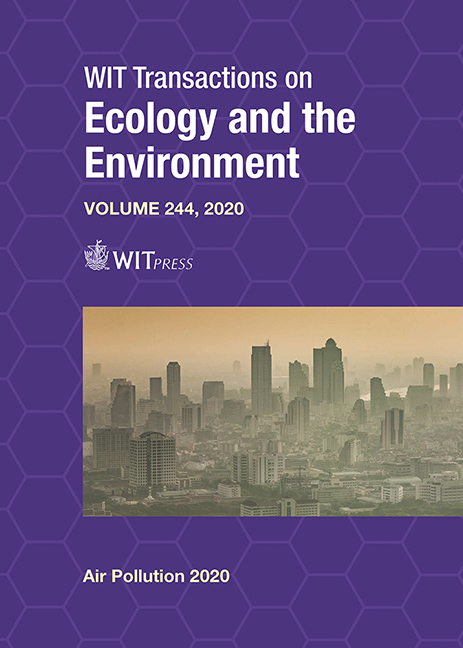SUSTAINABILITY OF SCHOOLS: A MULTIDISCIPLINARY APPROACH TO STUDYING AIR QUALITY IN EDUCATIONAL BUILDINGS
Price
Free (open access)
Transaction
Volume
244
Pages
14
Page Range
39 - 52
Published
2020
Size
361 kb
Paper DOI
10.2495/AIR200041
Copyright
WIT Press
Author(s)
CHIARA TONELLI, LUCIA FONTANA, ILARIA MONTELLA, GINEVRA SALERNO, VALERIA VITALE, LIVIA LEONI, GIORDANO RAMPIONI, ANTONELLA SGURA, MARCO TESCARI, ION UDROIU, ELISABETTA MATTEI, ELENA PETTINELLI, ILARIA AMORI, EMILIA PABA, ANTONELLA MANSI
Abstract
This work reports the preliminary results of the “Sustainability of Schools” (SoS) project, a multidisciplinary project funded by Roma TRE University which involves the departments of architecture, engineering, economics, mathematics and physics, and sciences at Roma Tre University and the Department of Occupational and Environmental Medicine Epidemiology and Hygiene of Italian Workers’ Compensation Authority (INAIL). Healthy indoor air and thermal comfort are important for any type of building, but they play an essential role in teaching and learning processes because the intellectual activities are intimately conditioned by these. There is a significant bibliography on the indoor environment in office buildings, while few studies have been focused on educational buildings. The main objective of this project is to form a research team with specific areas of expertise in different fields aimed at defining technologies, methodologies, and protocols to assess the use for health, wellbeing, and energy saving in educational buildings. In this preliminary report of activity, two types of construction have been chosen as case studies, representative of a large number of Italian schools. A building of the first kind, prefabricated and built during the 1960s, is located on the Rome seaside. Two buildings of the second kind are historical properties of Roma Tre University in Rome downtown and are representative of a large number of masonry buildings with thermal mass. Here we present a multidisciplinary methodological approach for measuring indoor air quality parameters (i.e. temperature, relative humidity, concentration of pollutants, presence of ionizing radiation, biotic and abiotic factors) and the development of a class of numerical models. Overall, we paved the way for the future development of more advanced models integrating measures and models.
Keywords
indoor air quality, air pollution modelling, aerosols and particles, emission studies, health effects, monitoring and measuring, educational buildings, thermal comfort, computer fluid dynamics, biogenic emissions, airborne microorganisms





